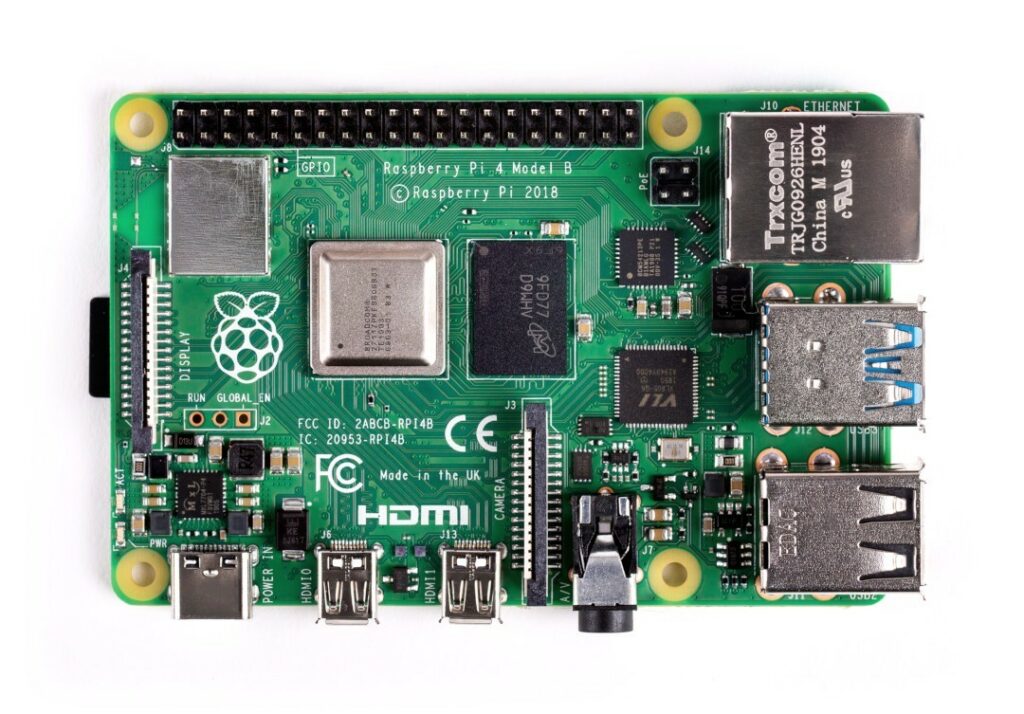Table of Contents:
In business, we often encounter the phenomenon of imitation of the leaders of a given industry by smaller companies just entering the market.
It is no different in the world of technology – a perfect example of such a situation was the launch of the Rock Pi 4 minicomputer, which aspired to be a serious competitor to the chips from Raspberry Pi.
Did it succeed in winning the hearts of electronics enthusiasts?
What are its characteristics?
In what applications does it perform best?
Check out the answers to the most important questions, regarding the Rock Pi 4 board.
What is the Rock Pi 4?
Rock Pi 4 is a Single Board Computer (SBC) minicomputer developed by Radxa, based on ARM architecture.
It is a compact device that combines a powerful processor, a variety of interfaces and support for advanced applications.
It uses a Rockchip RK3399 processor based on ARM Cortex-A72 architecture as the central processing unit.
The Rock Pi 4 offers various RAM configurations, ranging from 1 GB all the way up to 4 GB in the LPDDR4 version.
It is compatible with several operating systems, such as Android and Linux.
It also provides two storage options – mSATA and microSD connectors – for flexible use of different media. USB 3.0, USB-C and PCIe connectors, in turn, allow the device to be easily expanded with additional modules and accessories.
It’s worth mentioning that the Rock Pi 4 uses an ARM Mali-T860MP4 graphics chip, making this minicomputer ideal for handling advanced graphics tasks, including multimedia applications, games or projects requiring higher-quality graphics.
Rock Pi vs Raspberry Pi - what is the most important difference?
Often compared to each other, Rock Pi and Raspberry Pi minicomputers have a lot in common – including.
similar size or the ability to connect a range of additional devices and accessories.
Experienced electronics enthusiasts will certainly notice subtle contrasts in the technical specifications of the two boards.
The most important difference, however, is the community built around these systems.
The Raspberry Pi is hugely popular among the hobbyist and educator community, which translates into a rich base of available projects, documentation and support.
It is an ideal tool for those starting out in programming and electronics.
On the other hand, the Rock Pi, with its slightly more advanced specifications, is aimed at more experienced users, embedded systems enthusiasts and professionals.
This platform may be more attractive to those looking for higher performance in IoT, multimedia or embedded systems projects.
However, it will not be the best choice for startups.
How can the Rock Pi 4 be used?
Rock Pi 4, thanks to its advanced technical specifications, has found applications in a variety of fields.
Below are some examples of scenarios in which this microcomputer can be helpful:
1. IoT (Internet of Things) projects
Due to its compact size, low power consumption and versatile communication capabilities, the Rock Pi 4 is ideal for IoT projects.
It can act as a central point in smart homes, enabling communication between IoT devices and collecting data from various sources.
2. multimedia solutions
With HDMI 2.0 and ARM Mali-T860MP4 graphics chip, the Rock Pi 4 can be used as a platform for creating advanced multimedia systems.
It will work well for movie playback, games or even as a home entertainment center, supporting high resolution.
3. servers and network applications
With a PCIe connector and sufficient RAM, the Rock Pi 4 can act as a small server or support network applications.
This is especially useful for projects requiring support for a large number of simultaneous connections.
4. development of software applications
The Rock Pi 4 will also prove useful as a platform for developing and testing software applications.
Combined with a variety of interfaces, it allows developers to work on projects in machine learning or data analysis.
5. hobby projects
For electronics and programming enthusiasts, the Rock Pi 4 provides the perfect platform for creating DIY projects.
With plenty of GPIO ports, it’s easy to connect sensors, motors, or cameras, opening up endless possibilities for experimentation.
What is needed to run the Rock Pi 4 minicomputer?
To get the Rock Pi 4 minicomputer up and running, you need a few essential items.
The first is a microSD memory card, which acts as a carrier for the installed operating system.
This card will store the software necessary for the Rock Pi 4 to function.
Next, you will need an AC adapter that will provide the proper voltage and current for the device.
In addition, you will need an HDMI cable to connect the minicomputer to a monitor, as well as a mouse and keyboard for control and data entry.
Finally, it’s important to provide internet access so you can download the necessary software and updates for the Rock Pi 4.
How useful was this post?
Click on a star to rate it!
Average rating 3 / 5. Vote count: 1
No votes so far! Be the first to rate this post.




















